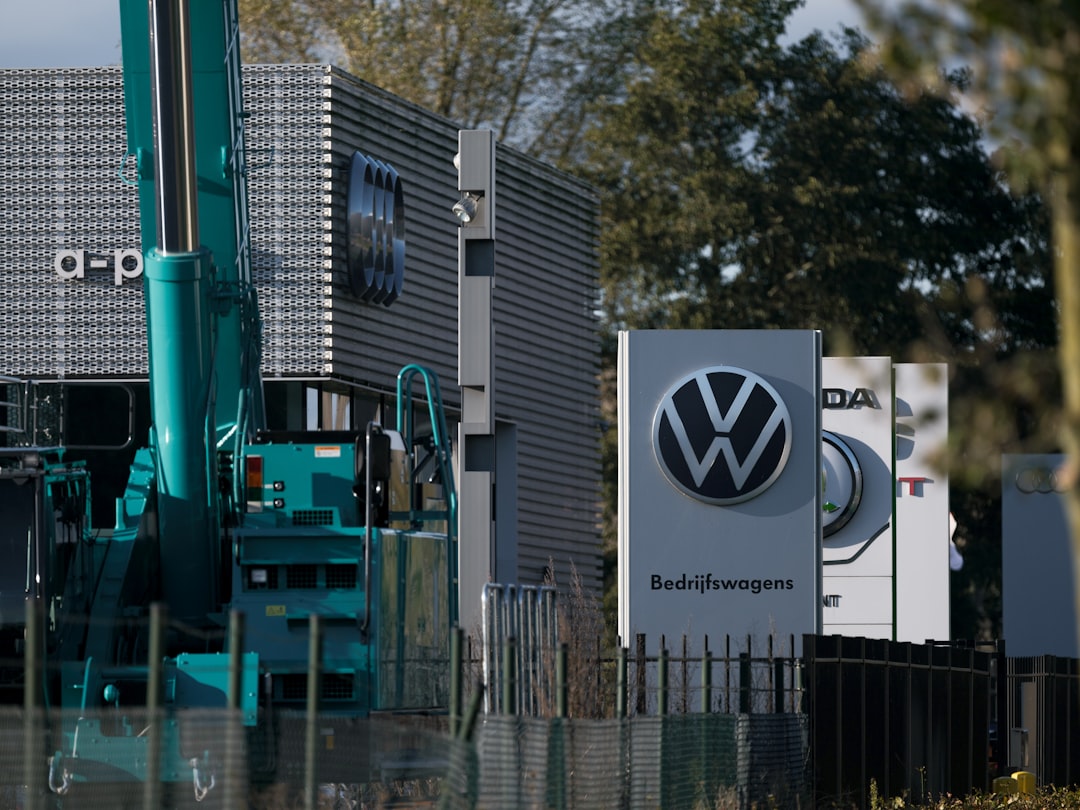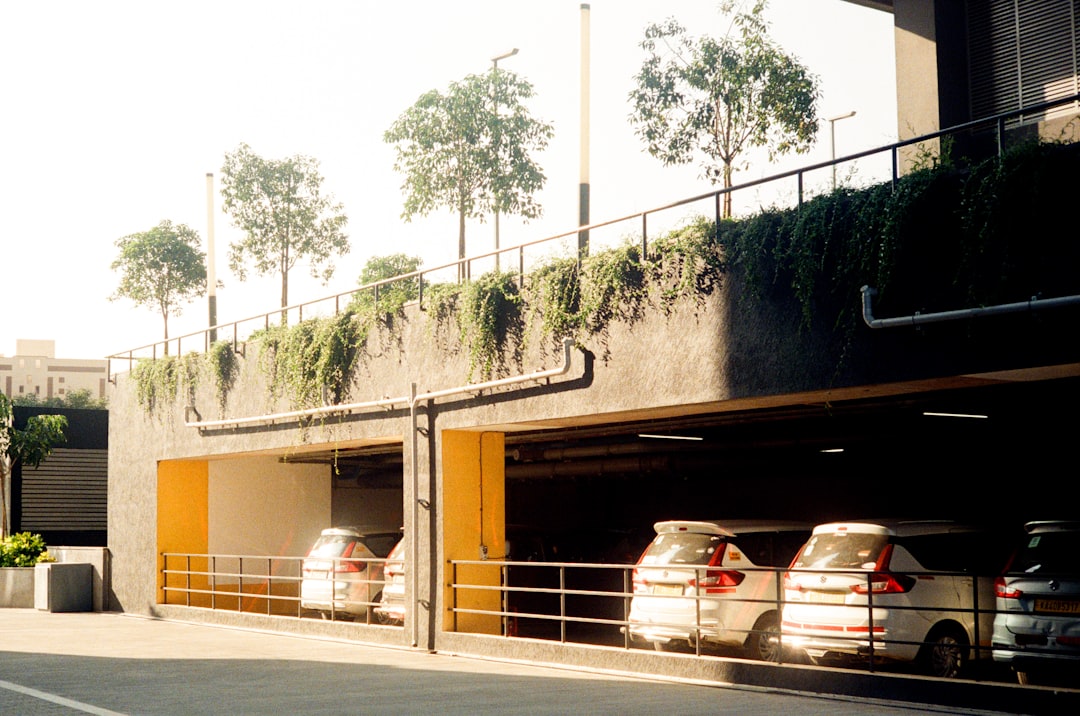

Engage prospects with a scan and streamline customer engagement with FREE QR code marketing tools by Sona – no strings attached!
Create a Free QR CodeFree consultation

No commitment

Engage prospects with a scan and streamline customer engagement with FREE QR code marketing tools by Sona – no strings attached!
Create a Free QR CodeFree consultation

No commitment
In today’s digitally driven market, carport manufacturers are challenged to identify high-value prospects and efficiently move them through complex buying journeys. With customer expectations rising for instant access to design tools, transparent pricing, and responsive service, many traditional tactics such as printed catalogs, static signage, or paper-based forms leave critical gaps. Missed opportunities often result from a lack of timely lead capture, incomplete customer data, and the inability to track true buyer intent, especially when prospects browse anonymously offline or online.
QR codes in marketing are emerging as a powerful bridge between these offline interactions and digital customer journeys, helping carport manufacturers capture and nurture valuable leads who may never fill out a form or call directly. When a potential buyer scans a code on a carport display at a tradeshow or on an installation sticker, they instantly access configurators, pricing calculators, or support resources, minimizing the friction that lets prospects slip away untracked. This seamless connectivity not only improves lead quality but also ensures every interaction is actionable and measurable.
By strategically deploying QR code solutions, carport manufacturers can sidestep common pain points like delayed follow-up, lack of audience visibility, and generic outreach. This guide explains how QR codes are transforming everything from lead capture to retention and service, offering real-world context, step-by-step actions, and creative ways to build a data-driven, customer-centric engagement model.

Many carport manufacturers struggle with slow, manual lead capture, often relying on printed forms or outdated brochures, which make it easy for high-intent prospects to stay anonymous and leave without a trace. The result is predictable: missed opportunities to initiate conversations, fragmented customer records, and slow response times that allow competitors to engage first.
QR codes simplify these handoffs by turning every physical asset into a digital access point. Instead of asking a visitor to take a brochure and follow up later, a QR-enabled display can route them to a configurator, a price estimator, or a short form via Google Forms QR tailored to their material and size preferences. Scan events can be pushed directly to your CRM, which reduces data entry errors and enables faster, more relevant follow-up.
When paired with an automated platform like Sona QR, this approach scales across your entire footprint. Every showroom, brochure, and install can become an interactive, trackable sales channel, ensuring high-value prospects are identified early and engaged with relevant next steps.
Persistent industry pain points, including lost leads due to anonymous visitors, sluggish responses to buyer interest, and outdated print collateral, have made it difficult for carport manufacturers to consistently engage and convert prospects. QR codes for marketing directly address these challenges by enabling immediate, measurable actions at the moment of interest.
Beyond convenience, QR codes bring consistency and accountability to your marketing and sales processes. They simplify customer access to the experiences buyers want most, from real-time configurators to financing calculators, while also giving your team the data needed to prioritize outreach and personalize follow-ups.
Through strategic QR integration, carport manufacturers convert previously untracked moments into visible, valuable interactions. The result is a more agile, data-informed approach to sales and marketing that compounds over time.

Carport sales cycles involve many touchpoints: showroom visits, jobsite consultations, direct mail offers, and long-tail service needs. QR code formats allow you to tailor the scan experience to each use case so buyers get exactly what they need without hunting through menus or phone trees.
While basic web links cover most needs, specialized formats can further reduce friction. For example, a vCard on a salesperson’s badge or a service technician’s sticker ensures contact details are saved instantly. Dynamic codes future-proof printed assets by letting you swap destinations as your offers or documentation evolve.
Together, these formats provide a flexible toolkit for carport manufacturers. Every area of the business, from showroom to field service, can use QR codes to improve customer experience and gather the data needed to drive better outcomes.

Because high-value carport prospects do not always follow a linear path to purchase, manufacturers often struggle with low visibility and partial attribution. The smartest approach is to place QR codes where attention and intent already exist, and to make scanning feel like the obvious next step.
Think about how your buyers shop: they walk lots, flip through catalogs, talk to neighbors, and attend county fairs or industry expos. Strategic QR placements meet them in each of these contexts and provide immediate value: design inspiration, ballpark pricing, or post-sale support.
Optimized placements lower the risk of missing warm leads by ensuring that every point of consideration can trigger an action. Over time, scan data clarifies which channels deserve more investment and which messages generate the highest conversion.

Many manufacturers rely on passive funnels that assume prospects will call or complete a web form on their own. QR codes create low-friction entry points that align with how modern buyers research and decide. The best part is that each scan leaves a data trail that can be used for prioritization and personalization.
Focus on QR use cases that eliminate friction and highlight value: getting a price range fast, visualizing options, or getting support with minimal effort. When your codes feel helpful, scan rates rise and lead quality improves.
Each of these use cases addresses the root causes of lead loss: anonymity, delayed follow-up, and generic messaging. As a bonus, scan data populates your CRM with the exact signals your sales team needs to personalize outreach.
A major challenge in the carport sector is losing track of high-fit prospects who engage in physical environments yet never identify themselves online. QR codes solve this by converting momentary interest into tagged, segmentable audiences you can reach again through email, SMS, or ads.
By deploying multiple codes across your touchpoints, you can infer intent, context, and readiness. For example, a scan from a showroom model’s badge suggests near-term purchase interest, while a scan from a maintenance guide suggests an existing owner who may be ripe for accessories or referrals.
With a platform like Sona QR, each scan becomes an intelligent entry point into your funnel. Segments are built on real behavior, not assumptions, which makes your retargeting substantially more efficient.
Fragmented touchpoints and outdated data often undermine otherwise solid marketing plans. QR codes act as a connective layer that makes each channel more measurable and every customer journey more coherent from first touch through purchase and service.
The key is to design the next step for each environment: configurators for showroom displays, galleries or case studies for direct mail, and service portals for installed units. When every channel has a scan-ready action, conversions increase and reporting becomes clearer.
Sona QR centralizes code creation and analytics across channels, and Sona.com syncs scan activity to your CRM and ad platforms. Together they form a unified engine for offline attribution, retargeting, and optimization.
Carport manufacturers often face complexity when coordinating cross-channel campaigns or tracking ROI. A clear process ensures fast rollout, clean data, and meaningful insights that compound with each campaign.
Use the following steps to plan, deploy, and optimize your QR initiatives. Treat each step as a repeatable template that can be applied to new models, markets, and seasons. Start creating QR codes for free.
Clarify what success looks like for this campaign and who it serves. Example goals include capture custom quote requests at a tradeshow, boost warranty registrations post-installation, or increase accessory sales among recent buyers.
Select static codes for fixed destinations and dynamic codes for campaigns that need tracking, editing, or multichannel attribution. Dynamic codes are recommended for most marketing and sales use cases.
Presentation and scannability drive adoption. Brand your codes, add frames and short instructions, and verify that the code works on the surfaces where it will live.
Prioritize placements that map to your growth plan. Use unique codes per channel and per asset so attribution is clean and insights are actionable.
Measurement is your advantage. Use real-time dashboards to see which codes are performing, where drop-offs occur, and how quickly leads move through the funnel.
This process makes QR campaigns measurable and adaptable. With Sona QR, you can manage codes centrally, analyze performance, and sync results to your CRM without manual work.
A recurring industry frustration is the disconnect between offline engagement and the digital sales funnel. Without actionable analytics, revenue attribution is guesswork and buyer signals are easy to miss. Modern QR integrations solve this by capturing detailed context at the scan and stitching it to the rest of the journey.
True performance marketing requires more than scan counts. You need to connect scans to lead creation, opportunity stages, and closed revenue. That means tracking the entire path: where the scan happened, what content was consumed, when follow-up occurred, and what came next.
Sona QR provides the scan-level data, while Sona.com extends attribution and identity resolution so you can link anonymous scans to known buyers. Together they help you close the loop from first scan to revenue.
Scaling QR results means addressing hidden challenges such as poor attribution, limited staff training, and inconsistent follow-up. A few focused practices can raise scan rates, improve conversion, and extend value across the lifecycle.
Begin by treating each code as a trackable campaign asset, not a generic link. Then equip your team with simple scripts and clear CTAs so they can confidently guide buyers to scan and take the next step.
Creative application: affix a weather-resistant QR sticker under the eave of every installed carport, using QR code creation best practices. The code opens maintenance tips, a parts reorder form, and a referral link. This reduces support overhead, drives parts revenue, and encourages word-of-mouth growth.

Innovative carport manufacturers are using QR-enabled experiences to close visibility gaps, accelerate follow-up, and turn post-sale interactions into growth channels. The common thread is clarity: a specific promise near the code that makes scanning feel worthwhile.
These examples show how small design decisions and clear CTAs can lift engagement. They also illustrate how to convert real-world interest into structured data that feeds retargeting and revenue attribution.
Each case pairs a simple scan prompt with meaningful value, then ties the action back to systems that can measure and scale results.
Even strong campaigns can underperform if codes are hard to scan, CTAs are vague, or linked content is out of date. Avoid these issues with a few expert habits and a commitment to iterative testing.
Design choices and operational discipline matter as much as creative. Make sure placements are visible, the promise is obvious, and the destination loads quickly and works beautifully on mobile.
Focusing on these fundamentals turns QR programs from nice-to-have add-ons into reliable engines of measurable growth.
The stakes in carport manufacturing are high. Every untracked inquiry, slow response, or missed upsell represents lost revenue and a weakened competitive position. QR codes, when deployed with strategy and discipline, help redefine engagement across the customer lifecycle. From early design exploration to post-sale service, each interaction evolves from a static touchpoint into a measured opportunity for connection and conversion.
QR codes provide carport manufacturers with a practical, scalable solution to persistent visibility and attribution challenges. They unlock real-time lead capture, data-driven follow-up, and a connected experience that buyers appreciate. By linking every display, brochure, and installation to actionable digital content, manufacturers gain an edge where it counts most: faster decisions, richer personalization, and measurable performance. With Sona QR and Sona.com, you can generate codes in minutes, track engagement across channels, and connect scans to pipeline and revenue so every campaign earns its place in your growth playbook.
QR codes have revolutionized the carport manufacturing industry by transforming static customer interactions into dynamic, measurable engagement opportunities. From streamlining access control to enhancing customer onboarding and after-sales support, QR codes enable manufacturers to acquire new customers, offer seamless experiences, and gather valuable insights that drive smarter business decisions. Imagine instantly knowing which access points or informational materials resonate most with your clients—and optimizing these touchpoints in real time.
With Sona QR, carport manufacturers can easily create dynamic, trackable QR codes that update instantly without the need for reprinting. This means every scan becomes a direct connection to revenue, enabling you to monitor usage, improve security, and boost customer satisfaction effortlessly. Start for free with Sona QR today and turn every QR code into a powerful tool for growth and operational excellence.
Carport manufacturers often struggle with missed opportunities due to slow, manual lead capture, anonymous browsing by prospects, fragmented customer records, and delayed follow-up caused by reliance on printed forms and outdated collateral.
QR codes bridge offline interactions to digital journeys by enabling instant access to design tools, pricing calculators, and support resources, which captures high-quality leads, reduces manual data entry errors, accelerates follow-up, and provides measurable engagement data.
Common QR code formats include web links directing to configurators or quote forms, vCards for saving contact information, warranty and product info links, feedback and service portals, and dynamic codes that allow destination updates without reprinting.
QR codes should be placed on model carports, showroom structures, dealer lots, product literature, direct mail pieces, trade show materials, jobsites, and installation stickers to meet buyers at points of interest and drive measurable actions.
Key steps include defining campaign goals, choosing the right QR code type, designing and testing codes for real-world conditions, deploying codes across high-impact channels with clear CTAs, and tracking, analyzing, and optimizing campaign performance.
By deploying unique QR codes across multiple touchpoints, manufacturers can segment audiences based on journey stage, product interest, and channel, then sync scan data to CRMs to trigger personalized nurture sequences and improve retargeting efficiency.
Dynamic QR codes allow manufacturers to update destinations in real time, track scans, perform A/B testing, and maintain performance histories, which enhances flexibility and accuracy without the need to reprint materials.
QR codes convert anonymous offline interest from displays or brochures into measurable digital engagement by routing prospects to interactive tools like configurators and pricing calculators, thus capturing buyer intent instantly.
Manufacturers should link to value-driven content such as instant price ranges, custom design configurators, warranty registration forms, maintenance videos, and service request portals to make scanning helpful and encourage engagement.
QR codes capture detailed context at the moment of scan, including location and device data, and sync with CRM systems to link scans to lead creation, sales stages, and closed revenue, enabling accurate ROI measurement and budget justification.
Common pitfalls include poor code placement or visibility, vague calls to action, outdated linked content, lack of testing for scanning conditions, and insufficient staff training on promoting QR code usage.
The article does not provide specific cost information for carports from manufacturers.
While the article does not directly address choosing manufacturers, it suggests considering those that use modern digital tools like QR codes to provide instant design access, transparent pricing, and responsive service for a better customer experience.
The article mentions materials such as steel, aluminum, and hybrid structures when discussing product interests and segmentation but does not detail all commonly used materials.
Benefits include seamless lead capture, reduced follow-up delays, measurable engagement, dynamic content updates, improved customer experience, data-driven sales insights, cost efficiency, and enhanced offline-to-online conversion.
Use Sona QR's trackable codes to improve customer acquisition and engagement today.
Create Your FREE Trackable QR Code in SecondsJoin results-focused teams combining Sona Platform automation with advanced Google Ads strategies to scale lead generation

Connect your existing CRM

Free Account Enrichment

No setup fees
No commitment required

Free consultation

Get a custom Google Ads roadmap for your business






Launch campaigns that generate qualified leads in 30 days or less.
